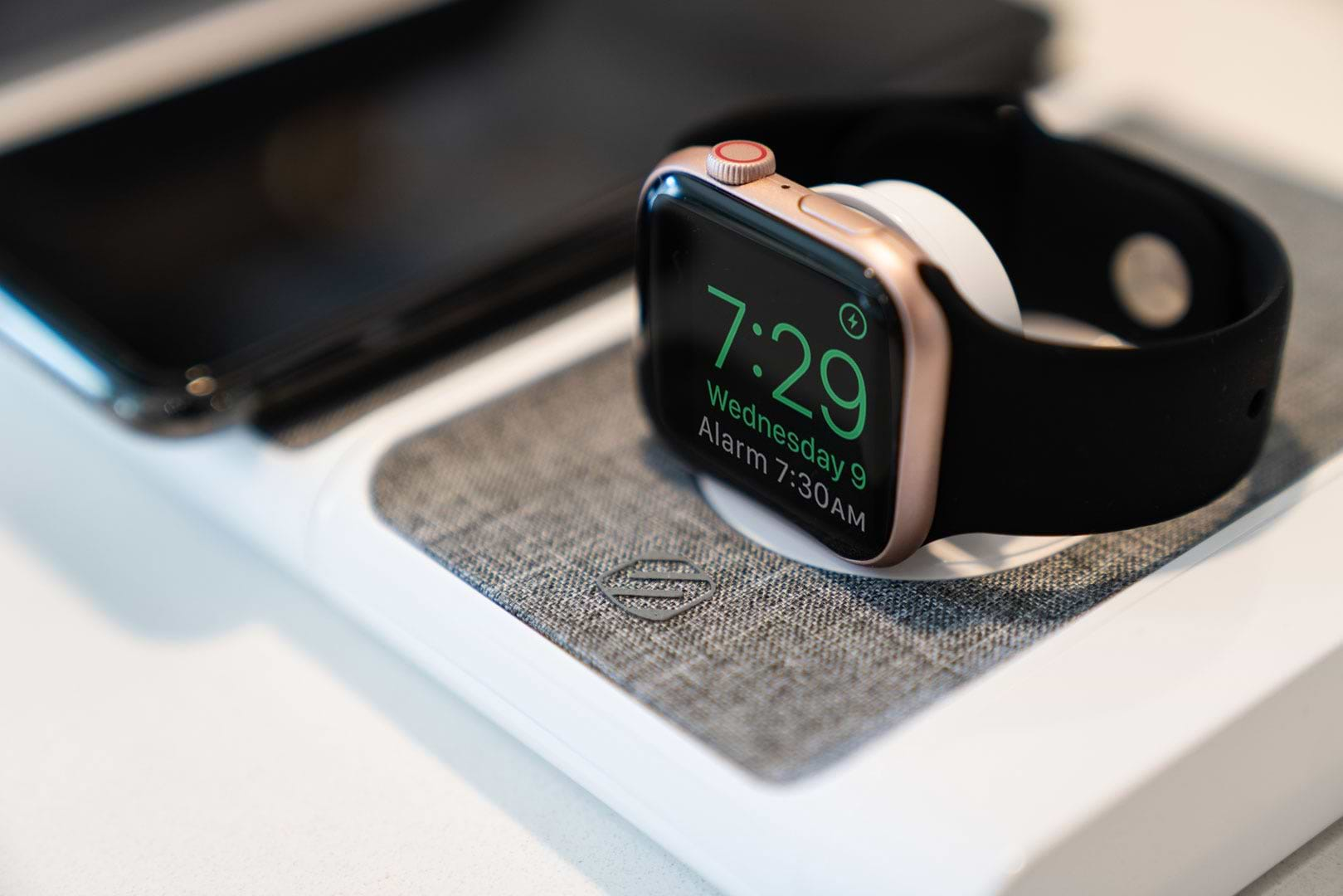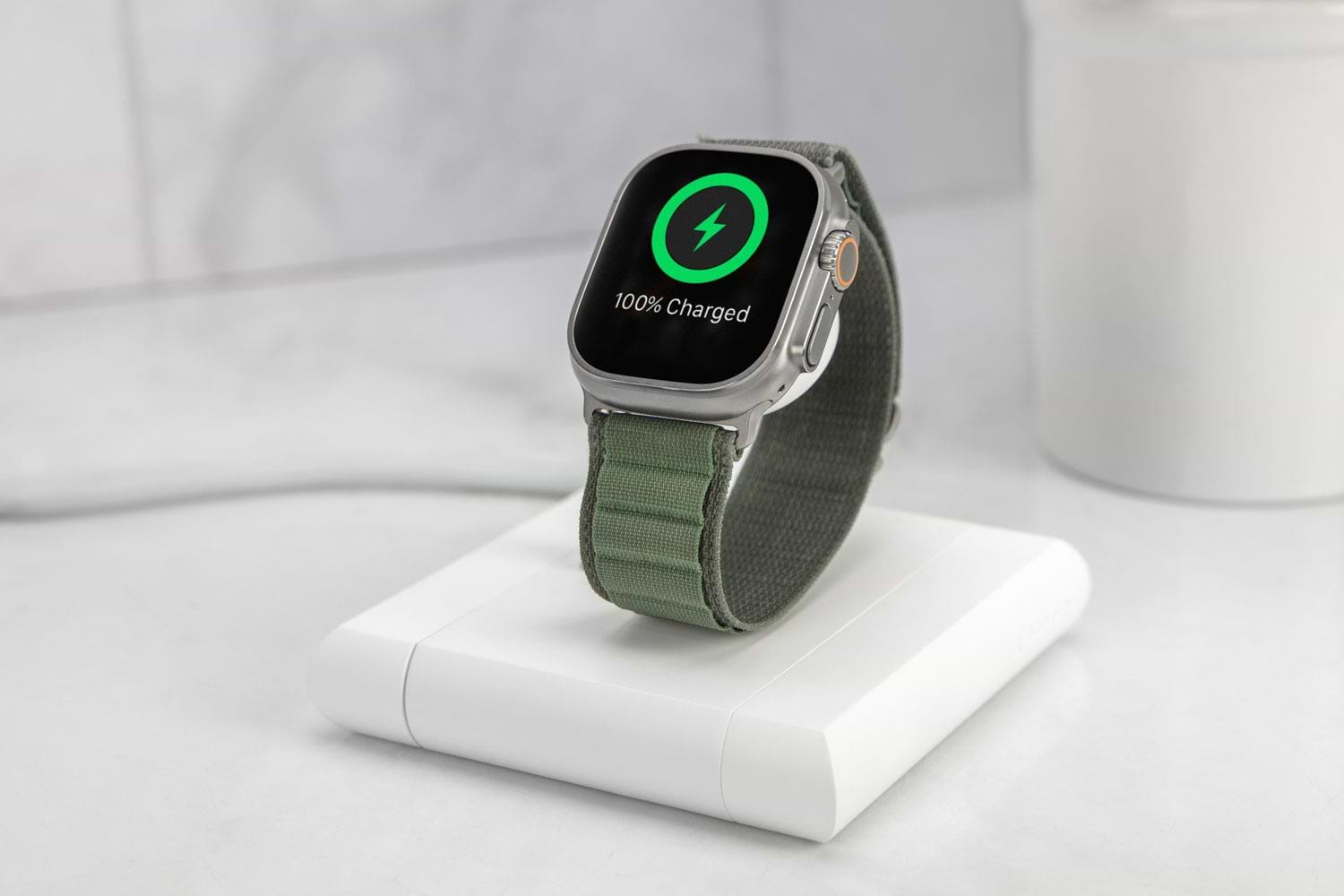Apple Watch® Charging Guide: Tips & Methods

In today's fast-paced world, staying connected is essential. And when it comes to on-the-go connectivity, the Apple Watch is a game-changer. But to keep your Apple Watch powered up and ready for action, it's important to understand the ins and outs of charging.
In this comprehensive guide, we'll walk you through everything you need to know about charging your Apple Watch, from understanding your battery life to troubleshooting common issues. So let's dive in!
Understanding Your Apple Watch Battery
Before we delve into the details of charging, let's take a moment to understand the basics of your Apple Watch battery life. The battery life of your Apple Watch can vary depending on usage, settings, and other factors. Apple estimates that most Apple Watch models can provide up to 18 hours of battery life on a single charge. Keep in mind that actual battery life may vary, so it's important to monitor your usage and make adjustments accordingly.
The Basics of Apple Watch Battery Life
Your Apple Watch battery performance can be influenced by several factors, including screen brightness, app usage, notifications, and workout tracking. By adjusting these settings, you can optimize your battery life. Here are a few tips:
- Reduce Screen Brightness: Lowering your Apple Watch screen brightness can have a significant impact on battery life. To adjust the brightness, swipe up on the watch face and adjust the slider to your desired level.
- Manage App Notifications: By selectively enabling notifications for only essential apps, you can conserve battery life. To manage app notifications, open the Watch app on your iPhone and navigate to My Watch > Notifications.
- Minimize Background App Refresh: Background app refresh can drain your battery unnecessarily. To modify background app refresh settings, go to My Watch > General > Background App Refresh.
- Disable Unnecessary Complications: Complications are small features on your Apple Watch face that provide quick access to information. Disabling unnecessary complications can help conserve battery life. To manage complications, press firmly on the watch face, tap Customize, and remove the ones you don't need.
Additionally, it's worth noting that certain activities, such as using GPS or playing music directly from your Apple Watch, can have a more significant impact on battery life. If you frequently engage in these activities, you may need to charge your Apple Watch more frequently or consider using a power-saving mode.
How to Check Your Apple Watch Battery Status
Monitoring your battery life is essential to ensure your Apple Watch is always ready for use. Here's how you can easily check your Apple Watch battery status:
- Raise your wrist or tap the watch face to wake up your Apple Watch.
- Swipe down from the top of the watch face to access the Control Center.
- Look for the battery icon, which displays the current battery percentage.
By regularly checking your battery status, you can stay informed about your Apple Watch's power level and plan your charging accordingly. It's also worth noting that Apple Watch Series 5 and later models have an always-on display feature, which allows you to glance at the time and other information without fully waking up the watch. While this feature is convenient, it may have a slight impact on battery life compared to previous models.
Remember, understanding your Apple Watch battery and implementing the right settings and habits can help you maximize your usage time and ensure that your Apple Watch is always ready to assist you throughout the day.
Preparing Your Apple Watch for Charging
Now that you understand the basics of your Apple Watch battery, let's explore how you can prepare your device for charging.
Ensuring that your Apple Watch is clean and using the right charger are important steps in maintaining its performance and longevity. Let's dive into the details of each step.


Cleaning Your Apple Watch Before Charging
Before connecting your Apple Watch to the charger, it's a good idea to give it a quick clean. Over time, dust, dirt, and sweat can accumulate on the watch, which may impact its charging efficiency. Cleaning your Apple Watch is a simple process that can be done in a few easy steps:
- Power off your Apple Watch and remove any accessories, such as straps or cases. This ensures that you have full access to clean all parts of the watch.
- Dampen a lint-free cloth with water. It's important to use a lint-free cloth to avoid leaving any fibers on the watch's surface.
- Gently wipe the surface of your Apple Watch with the damp cloth. Pay attention to areas where dirt and sweat may have accumulated, such as the back of the watch and the crevices around the buttons.
- Avoid submerging your Apple Watch in water or using cleaning products. Water damage can be detrimental to the watch's internal components, and cleaning products may contain chemicals that can harm the watch's finish.
- Dry your Apple Watch thoroughly with a soft, lint-free cloth. Make sure there is no moisture left on the watch before proceeding to charge it.
By following these cleaning steps regularly, you can maintain the cleanliness and charging efficiency of your Apple Watch.
Choosing the Right Apple Watch Charger
Now that your Apple Watch is clean, it's time to choose the right charger. Apple offers two types of chargers: the Apple Magnetic Charging Cable and the Apple Magnetic Charging Dock. Both chargers work with all Apple Watch models and are sold separately. Here are a few considerations to help you make the right choice:
- Magnetic Charging Cable: This is the standard charger included with your Apple Watch purchase. The cable features a magnetic connection that ensures a secure fit. It is a versatile option that allows you to charge your watch in various positions, such as flat on a surface or propped up using a stand.
- Magnetic Charging Dock: This charger offers the convenience of charging your Apple Watch in a flat, convenient position. It also doubles as a stylish stand for your device, allowing you to showcase your watch when it's not in use.
Both chargers are designed with Apple's high standards of quality and functionality. Whichever charger you choose, make sure it's an authentic Apple product to ensure compatibility and safety.
Now that you know how to clean your Apple Watch and choose the right charger, you are ready to keep your device in optimal condition and ensure that it charges efficiently every time.
Step-by-Step Guide to Charging Your Apple Watch
With your Apple Watch cleaned and charger in hand, let's walk through the steps of charging your device.
Connecting Your Apple Watch to the Charger
To charge your Apple Watch, follow these simple steps:
- Connect the charging cable or dock to a power source, such as a wall adapter or USB port.
- Hold the backside of your Apple Watch close to the charger until it clicks into place.
Your Apple Watch will display a charging icon, indicating that it's connected to the charger and successfully charging.
Correct Placement for Optimal Charging
Proper placement of your Apple Watch on the charger is crucial for optimal charging performance. Here are a few tips to ensure you're positioning it correctly:
- Align the backside of your Apple Watch (which contains the charging sensors) with the center of the charger.
- Avoid covering the charging sensors with any obstructions, such as straps or cases.
- Make sure your Apple Watch lays flat against the charger, with no tilt or misalignment.
By following these guidelines, you can maximize the efficiency of your charging process and ensure your Apple Watch is ready for action when you need it.
Advanced Charging Tips for Your Apple Watch
Now that you've mastered the basics of charging your Apple Watch, let's explore some advanced tips to supercharge your charging experience.
Maximizing Your Apple Watch Battery Life
If you find yourself needing extra battery life during the day, consider these tips:
- Optimize Power Reserve Mode: Power Reserve Mode is a feature that conserves the remaining battery life of your Apple Watch. To activate Power Reserve Mode, press and hold the side button until the Power Off slider appears, then swipe right to enter Power Reserve Mode.
- Disable Always-On Display: The Always-On Display feature keeps your watch face visible at all times. While convenient, it can drain your battery faster. To disable this feature, open the Watch app on your iPhone, navigate to My Watch > Display & Brightness, and toggle off the Always-On Display option.
- Turn Off Background Heart Rate Monitoring: If you don't need continuous heart rate monitoring, consider disabling this feature to conserve battery life. To turn off background heart rate monitoring, open the Watch app on your iPhone, go to My Watch > Heart Rate, and toggle off the Background Heart Rate option.
- Disable Location Services: Disabling location services for apps that don't require it can help extend your battery life. To manage location services, go to your iPhone's Settings > Privacy > Location Services.
Troubleshooting Common Charging Issues
Despite following all the steps correctly, you may encounter a few common charging issues with your Apple Watch. Here's how to troubleshoot them:
- Make sure the charging cable is securely connected to the power source and your Apple Watch.
- Check for any obstructions or debris on the charging sensors of your Apple Watch or charger and clean them if necessary.
- Restart your Apple Watch by pressing and holding the side button until the Power Off slider appears, then drag the slider to the right.
- If the issue persists, try using a different charging cable or charger to isolate the problem.
Wireless Charging for Apple Watch: What You Need to Know
Finally, let's explore the world of wireless charging for your Apple Watch.
Benefits of Wireless Charging
Wireless charging offers several advantages over traditional charging methods:
- Convenience: With wireless charging, you can simply place your Apple Watch on the charging pad without the hassle of connecting cables.
- Compatibility: Wireless chargers that support the Qi standard can be used to charge your Apple Watch along with other compatible devices.
- Portability: Wireless chargers are compact and portable, making them ideal for travel or on-the-go charging.
How to Use a Wireless Charger with Your Apple Watch
To use a wireless charger with your Apple Watch, follow these steps:
- Ensure the wireless charger is compatible with your Apple Watch model.
- Align the backside of your Apple Watch with the charging pad.
- Wait for the charging pad to recognize your Apple Watch and begin charging.
Wireless charging can be a convenient alternative to traditional charging methods, providing flexibility and ease of use.
In conclusion, mastering the art of charging your Apple Watch is essential for a seamless and uninterrupted experience. By understanding your Apple Watch battery, preparing your device for charging, and following the correct charging procedures, you can ensure that your Apple Watch is always ready to keep up with your busy lifestyle. Remember to explore advanced charging tips, troubleshoot common issues, and consider the benefits of wireless charging. With these tips and methods at your disposal, you'll have the power to make the most of your Apple Watch.